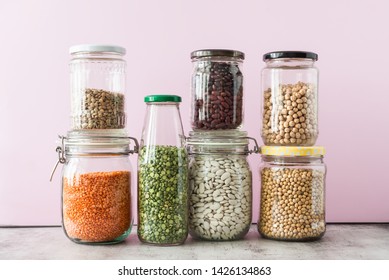Definition, purposes, importance, conditions, principles of seed storage are given below-

Seed Storage
Seed storage may be defined as the conservation of seeds obtained from the harvest until they are planted for successful crop production. The seeds are required to be conserved through proper storage for a short or long period. During the storage of seeds, moisture is appropriately controlled for the protection of deterioration.
Purpose of Seed Storage
- The purpose of seed storage is to maintain the seed in good physical and physiological condition from when they are harvested until the time they are planted.
- To protect seed from insect, pest, and disease.
- To conserve seeds until they germinate for subsequent crop production.
Importance of seed storage
- It increases crop yield.
- To get good plant stands in addition to healthy and vigorous plants.
- It decreases seed-borne disease due to changes in the local climate at storage.
Condition of Storage
- Seed storage aims to maintain its germination capacity; more stringent conditions are required than those to conserve the seed’s nutritional or industrial quality.
- During storage, some of the germination capacity is lost slowly or rapidly, depending on storage conditions.
- The store temperature and moisture will be low for dry seed storage at 10°C and relative humidity at 50%.
General Principles of Seed Storage
The following principles emerge as necessary for good storage because of the various factors affecting storage’s seed viability.
- Seed storage conditions should be dry and cool.
- Effective storage pest control.
- Proper sanitation in seed stores.
- Before placing seeds into storage, they should be dried to safe moisture limits, appropriate for the storage system.
- Storing high-quality seed only, i.e., well cleaned, treated, and high germination with vigour and good prestorage history.
- Determine seed storage needs because of the period or length of storage time and prevailing climate of the area during the storage period.
Stages of Seed Storage
The seeds are considered stored when they reach physiological maturity until they germinate or throw away because they are dead or otherwise worthless. The entire storage period can be conveniently divided into the following stages.
- Storage on plants (Physiologically maturity until harvest).
- Harvest until processed and stored in a warehouse.
- In storages (Warehouses).
- In transit ( rail wagons, trucks, carts, railway sheds, etc.).
- In retail stores.
- On the user’s farm.
Storage of Seed on Plants (Physiologically maturity until harvest)
Seeds are considered to be physiologically and morphologically mature when they reach maximum dry weight. At this stage, dry down or dehydration of the seed is well underway. Dry down continues after physiological maturity until the seed and fruit moisture content decreases to a level that permits effective and efficient harvest and threshing. This stage can be termed harvest maturity.
There usually is an interval time between physiological maturity and harvest maturity, and this interval represents the first segment of the storage period. Any delay in harvesting the seed after reaching harvest maturity prolongs the first segment of the storage period. The seed quality is greatly influenced by prevailing environmental conditions from when seeds reach physiological maturity until harvest.
Weathering damages are often a serious factor at this stage. As a result of weathering damages, seeds of many crops, E. g. Soybean loses their viability and vigour and is already low in germination even before they are harvested. Several factors such as soil conditions, mineral nutrient deficiencies during plant growth, water stress, high or low temperatures, disease and insect damage, etc., may also deteriorate seed quality by reducing viability and vigour at physiological maturity.
Other things being equal, the seeds that have begun to deteriorate due to one or more factors mentioned above subsequently will not store as well as the relatively undeteriorated seed. Therefore, it is of the utmost importance to maintain initial seed quality to the near maximum attainable by keeping weathering and other types of damages to the minimum possible. This would mean raising a good health seed crop, early harvesting, and adequate seed drying arrangements.
Storage from Harvest until Processing
The period of harvesting and cleaning is frequently one of the high temperatures. During this time, seeds still have high moisture content. Seed deterioration can be relatively rapid during this period. Transport from field to threshing floors, threshing floors to processing plants, and processing plants involve storage periods during which deterioration can be rapid and serious if the moisture content is above 13%. At moisture contents above this range, moulds may grow on in the seed end heating may occur.
Therefore, necessary to take the utmost care in the handling of material after harvest. If harvesting has been done above 13% moisture content, necessary arrangements for drying/aeration, etc., of seeds are necessary to preserve seed quality. Also, adequate care is essential for handling the seed materials at this stage to prevent mechanical mixtures and maintain lot identity.
Storage of Seed in Warehouse
It is customary for seed men and others interested in the storage of seeds to give primary attention to rooms or buildings labeled as seed storages. Seed aging and loss of germination during storage cannot be stopped altogether, though it could be appreciably reduced by providing good storage conditions. Seed longevity in storage warehouses depends upon several factors.
